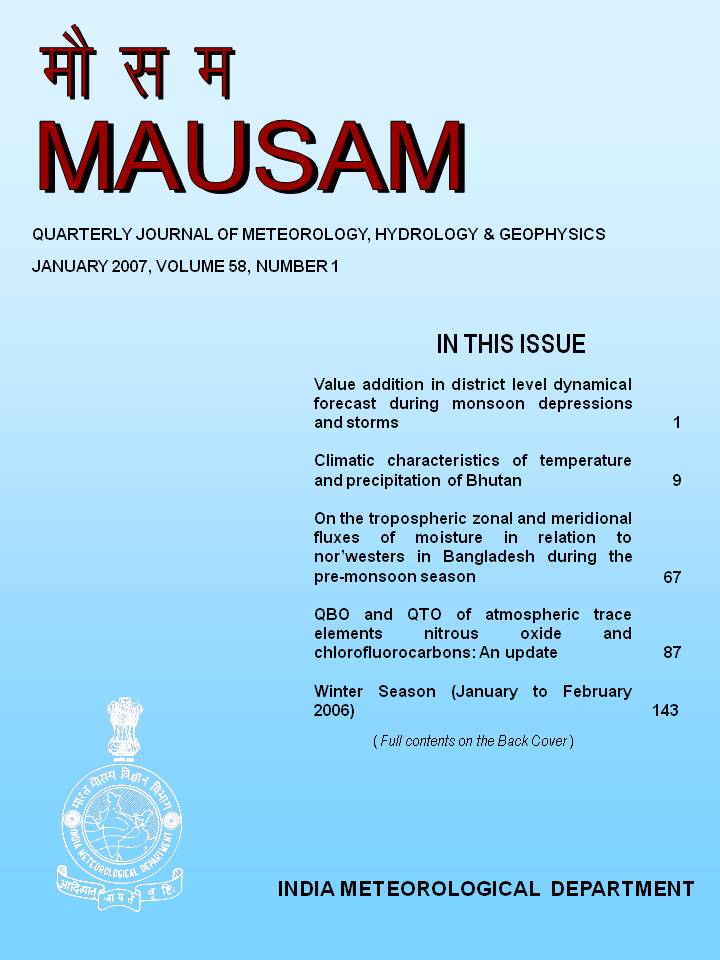Long-term trends in the frequency of severe cyclones of Bay of Bengal : Observations and simulations
DOI:
https://doi.org/10.54302/mausam.v58i1.1131Keywords:
Severe Cyclonic Storm (SCS), Intensification Rate (IR), Sea Surface Temperature (SST), Trend, Regional climate model, Simulation experiment, Anthropogenic emissionAbstract
The east coast of India and the coasts of Bangladesh, Myanmar and Sri Lanka are vulnerable to the incidence of tropical cyclones of the Bay of Bengal. Every year these cyclones inflict heavy loss of life and property in this region. Global climate change resulting from anthropogenic activity is likely to manifest itself in the weather and climate of the Bay of Bengal region also. The long-term trends in the frequency and intensity of tropical cyclones of the Bay of Bengal during intense cyclonic months May, October and November is one such problem which has been addressed in the present paper.
Utilizing the existing data of 129 years (1877-2005) pertaining to the tropical cyclone frequency and intensity in the Bay of Bengal during May, October and November, a study was undertaken to investigate the trends in the frequency of Severe Cyclonic Storms (SCS) during past decades. The results of the trend analysis reveal that the SCS frequency over the Bay of Bengal has registered significant increasing trends in past 129 years during the intense cyclonic months. It may be emphasized that these trends are long-term trends for more than hundred years based on statistical analyses which do not necessarily imply that SCS frequency has increased continuously decade after decade. As a matter of fact there has been a slight decrease in SCS frequency after peaking in the pentad 1966-1970, but this does not alter the long-term trend much. The intensification rate during November, which accounts for highest number of intense cyclones in the north Indian Ocean, has registered a steep rise of 26% per hundred years, implying that a tropical depression forming in the Bay of Bengal during November has a high probability to reach to severe cyclone stage. A regional climate model simulation revealed the enhanced cyclogenesis in the Bay of Bengal during May, October and November as a result of increased anthropogenic emissions in the atmosphere
Downloads
Published
How to Cite
Issue
Section
License
Copyright (c) 2021 MAUSAM

This work is licensed under a Creative Commons Attribution-NonCommercial 4.0 International License.
All articles published by MAUSAM are licensed under the Creative Commons Attribution 4.0 International License. This permits anyone.
Anyone is free:
- To Share - to copy, distribute and transmit the work
- To Remix - to adapt the work.
Under the following conditions:
- Share - copy and redistribute the material in any medium or format
- Adapt - remix, transform, and build upon the material for any purpose, even
commercially.



